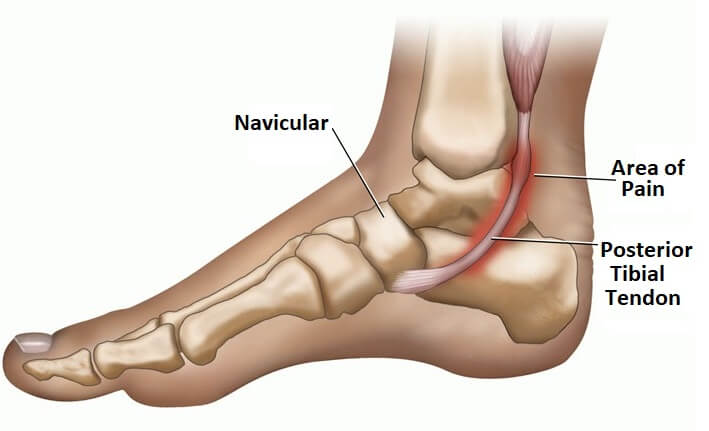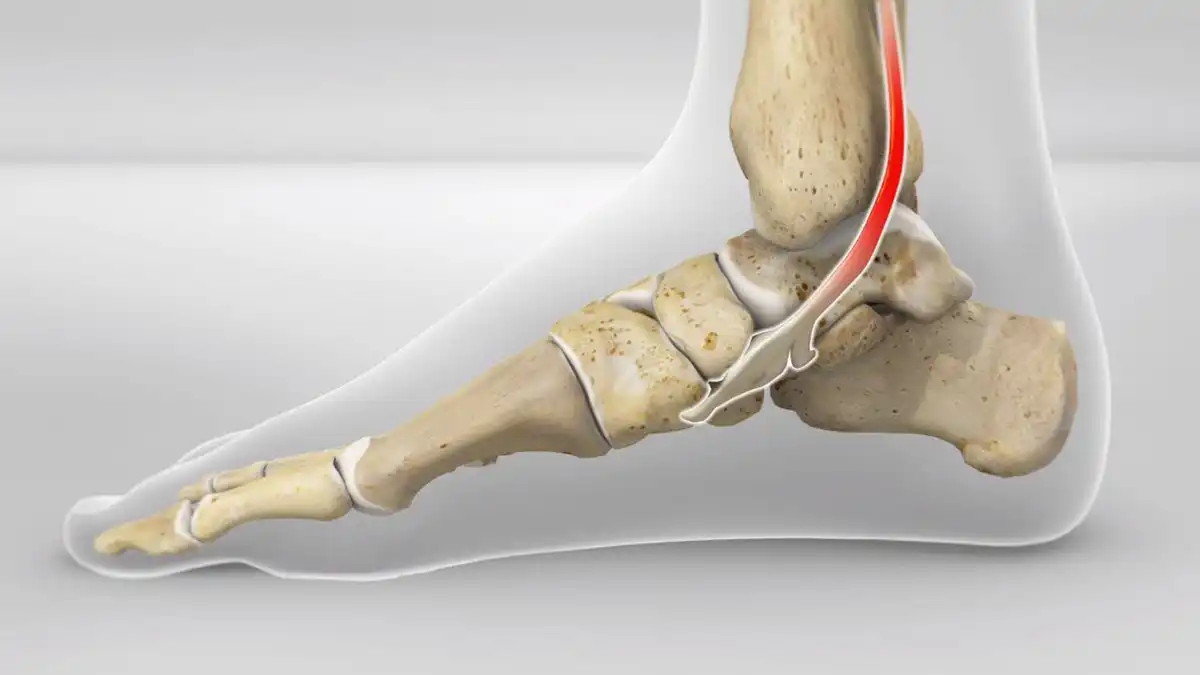The function of the posterior tibialis is to support the plantar arch. An insufficiency of the tibial tendon will later be its difficulty in accomplishing this task. This results in flattening of the foot or pronation.
The posterior tibialis acts as the primary dynamic stabilizer of the medial longitudinal arch and the primary inverter of the medial foot. Its contraction also elevates the medial longitudinal arch, making the hindfoot and medial foot a rigid structure. This allows the gastrocnemius to act more effectively during the gait cycle.
It is not necessary to have a complete rupture of the posterior tibial tendon for the foot to become flat. Indeed, it is the deterioration of the tendon, weakened its support capacity. The posterior tibial tendon in the court is less damage, lower damage can make it ineffective.
The most common cause is tendinosis due to repetitive strain injuries. As the tendon degenerates, it is replaced by ineffective fibrous tissue. This can occur in an area of hypovascularization in the region of the medial malleolus.
When the tendon loses function, the medial longitudinal arch of the foot collapses, causing relative internal rotation of the tibia and talus. There is eversion of the subtalar joint, which forces the heel to align in valgus, and abduction at the talonavicular joint.
Varus alignment of the heel causes lateral displacement of the normal axis of the Achilles tendon, which over time leads to contracture. As the deformity worsens, the distal fibula comes in contact with the lateral calcaneus, signaling lateral hindfoot pain.

4 stages of posterior tibial tendon insufficiency
What are the stages of posterior tibial tendon insufficiency? Posterior tibial tendon insufficiency is divided into stages by most foot and ankle specialists:
- Stage I – Pain along the posterior tibial tendon without arch deformity or collapse.
- Stage II – Onset of a deformity, causing the arc to collapse, which may or may not be visible or noticeable to you or to others. You may experience a simple feeling of weakness in your arch.
- Stage III – Potential deformation as the foot becomes fixed (rigid) in its deformed position.
- Stage IV – The deltoid ligament inside the ankle ruptures, causing ankle deformity as well as deformity of the foot. Over time, this can cause arthritis of the ankle.
| Stage 1 | Stage 2 | Stage 3 | Stage 4 |
| Tendon length normal | Tendon elongated | Tendon elongated | Degenerative changes in the subtalar joint and ankle joints |
| Progressive onset | Normal hindfoot | Degenerative changes in the subtalar joint | The hindfoot is fixed in eversion with incongruity of the ankle |
| Pain (mild to moderate) | Evolves over several months to several years | Tendon disturbed and less painful | A valgus tilt of the talus in the ankle mortise and lateral tibiolalar degeneration |
| Tenderness around the medial malleolus at its navicular insertion | Swelling and tenderness inferior to the medial malleolus | Pain in the lateral hindfoot | |
| Swelling inferior to the medial malleolus | A fixed deformity of the flatfoot develops | A fixed deformity of the flatfoot develops |
Symptoms
- Pain in the arch of the foot and lower pain behind the inside of the ankle (tendon course). Pain and trigger points will also be felt in the tibialis posterior muscle belly.
- Burning, shooting, tingling may also be felt inside the ankle, as the posterior tibial nerve is inflamed inside the tarsal tunnel (tarsal tunnel syndrome).
- Pain can also develop on the outside of the ankle, especially as the foot deforms.
- The pain and swelling get worse with walking and exercise, and usually get worse as the day progresses.
- Unable to perform a tiptoe elevation on the affected side (indicating posterior tibial tendon dysfunction).
- Characteristic development of a flat foot (collapse of the arch of the foot) on the affected side.
- Usually occurs within 1 foot, but can occur in both.
Causes
| Inflammatory | Inflammatory rheumatoid arthritis |
| Mechanical | Tendinopathy involvement Anomaly of the talocrural joint Soft tissue tension / traction Pre-existing flat foot Excessive functional pronation |
| Metabolic | Increase in cholesterol Menopause |
| Other | Infections Aging |
| non-specific causes | Pregnancy Microvascular involvement Macrovascular impairment |
| Facteurs non spécifiques augmentant le risque de développer une pathologie chronique | Increase in body mass index Smoking Localized exposure to steroids Long-term use of drugs Diabetes Hypertension Forefoot trauma / surgery |
Chockalingam, 2009

















